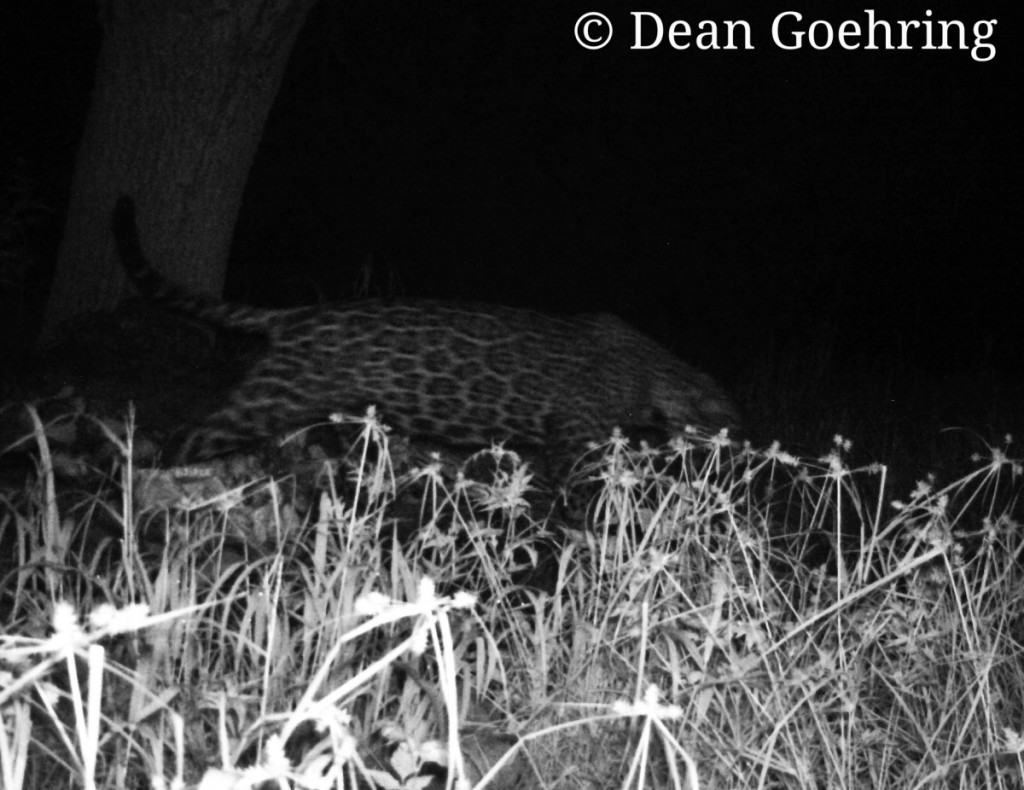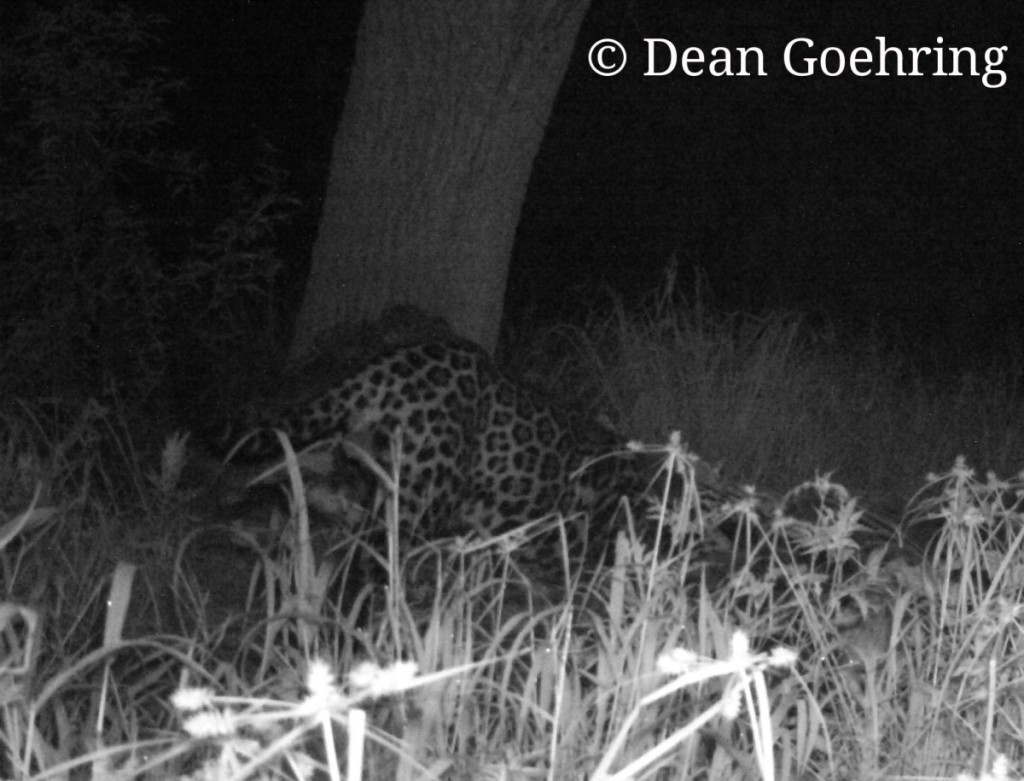
It is not every day a rare charismatic carnivore steps in front of a wildlife camera, especially when there is only one jaguar currently known to roam southwestern Arizona.
But that is exactly what happened to Dean Goehring, a student at Prescott College, in the process of earning his Bachelor of Science in Environmental Studies.
“My project was focused towards gaining an international perspective on wildlife management and conservation through scientific investigation of transfrontier focal study areas in southern Arizona and northern Mexico. Since these areas are biologically similar it was important to study the area as a greater ecosystem, despite socio-political barriers suggesting otherwise. The wildlife monitoring project took place from early June to mid-August and was conducted in the Madrean Sky Islands.
Using remote cameras, tracking skills, and observation, I was able to monitor wildlife through non-invasive techniques. Over 100 species were observed including mammals, reptiles, and birds. During my study I encountered rattlesnakes, tarantulas, and scorpions. I walked the trails used by coyotes, bears, and mountain lions. I examined the same carcass that a jaguar would later come to investigate. This was ultimately a lesson in co-existence.”
Analysis of the spot pattern confirms that this is the same jaguar that has been frequently photographed in the Santa Rita and Whetstone mountains of southern Arizona since 2011, as part of a US Fish and Wildlife Service funded study conducted by the University of Arizona.
Jaguars (Panthera onca) have been present in the borderlands of Arizona, New Mexico and Sonora for several decades, and at least one or more has been present here every year since 1997. Evidence of jaguars, and the ability to identify individuals, comes from photographs taken by remote sensing wildlife cameras or by the occasional back-country hunter. In January 2014, two Sky Island Alliance wildlife tracker volunteers, Tim Cook and Brit Oleson, happened upon jaguar tracks while hiking in southern Arizona, mostly likely the tracks of this same Arizona jaguar.
After taking Sky Island Alliance’s Wildlife Tracking Workshop last spring, Goehring was inspired to use cross border non-invasive wildlife monitoring for his undergraduate study project.
These shy nocturnal cats are protected under the Endangered Species Act and CITES, and it is incredibly rare to see evidence of them in the wild. It is illegal to pursue, harass or harm jaguars throughout their range. Jaguar Critical Habitat was designated in the US in 2014, which asks whether special management considerations or protection is required for federally funded projects or projects occurring on federal lands within the Critical Habitat area. The designation of Critical Habitat does not affect land ownership or establish a refuge, and has no impact on private landowners taking actions on their land that do not require federal funding or permits. Jaguars in the US are threatened by habitat loss and fragmentation, including the border wall and proposed open pit mining in the Santa Rita and Patagonia mountains. Mining reform and wildlife corridor protection will go a long way to protect the jaguar, which once lived and bred as far north as the Grand Canyon. In the Sonora borderlands, new Área Natural Protegida Destinada Voluntariamente a la Conservación, or Voluntary Natural Protected Areas, are providing thousands of acres of privately owned reserves for jaguars and other species.

Information from this new discovery has been shared with the US Fish and Wildlife Service, and Goehring is also sharing the wildlife data from his project with Sky Island Alliance to include with our collaborative conservation work, in partnership with National Parks and Reserves in Arizona and Sonora.
Goehring would like to give special thanks to the US Fish and Wildlife Service, Ami Adams, Walt Anderson, Kathy Cooper, Jim Rorabaugh, Carlos Robles, and everyone at Sky Island Alliance.
